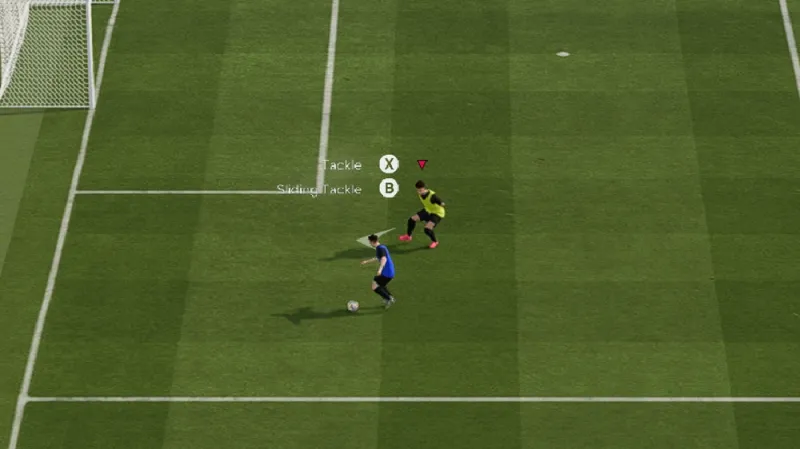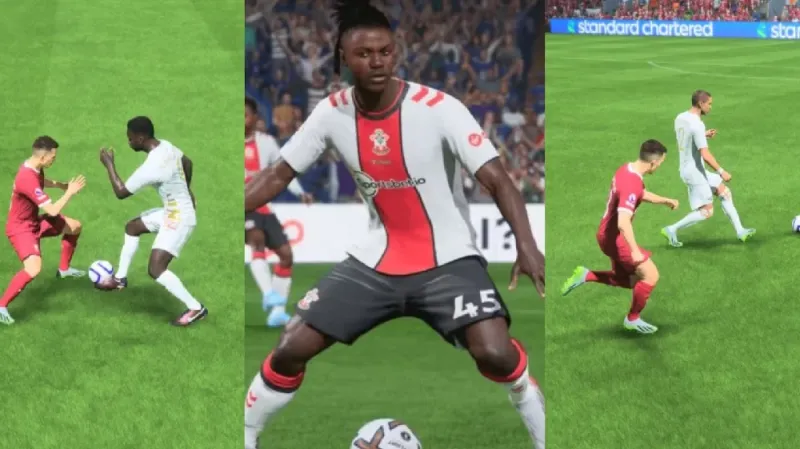
How to defend in FC 26 - The Best Tips You'll Ever Find
There's an old saying in football: "Attack wins you games, but defense wins you championships." This has never been truer than in EA Sports FC 26. With new gameplay mechanics and faster attacking movements, mastering the art of FC 26 defending can feel like an impossible task at first.
If you're feeling frustrated, conceding easy goals, and wondering how everyone else seems to have an impenetrable back line, you're in the right place. This isn't just a list of controls; this is a complete EA FC 26 defending guide covering the mindset, the strategy, and the mechanics you need to go from a leaky, bad defense to an absolute wall.
The Golden Rules in FC 26 Defending
Before we even touch the controller buttons, we need to talk about philosophy. Great defending in FC 26 starts in your head. It's about patience, discipline, and understanding a few core principles that separate the elite players from the rest.
Rule #1: Pace is Your Foundation

I know, I know. You want to use that rock-solid center-back with 90 Defending. But if he has 67 Sprint Speed, he's a liability in this year's game. Let's be candid: pace is still king, especially in your back line. When facing down rapid strikers with explosive acceleration, you need defenders who can keep up.
A good rule of thumb is to prioritize players with at least 80 Sprint Speed. A defender with 80 Sprint Speed and 80 Defensive Awareness is far more effective than one with 67 Sprint Speed and 90 Defensive Awareness. Chemistry styles are still useful, but they've been slightly nerfed. It's much better to start with a high-pace player and apply a Sentinel chem style to boost their defending and physical stats than it is to try to put a Shadow on a slow player to make them faster. Always build your defense with pace first.
Rule #2: Positioning Over Tackling

This is the single most important concept you need to learn in FC 26 defending. Your primary job as a defender is not to win the ball back. Your job is to defend the angle towards the goal.
Too many players get overly aggressive. They see the attacker, and their only instinct is to rush in and make a tackle. This is a huge mistake. When you commit to a tackle and miss, you've taken your defender completely out of the play, leaving a massive gap for your opponent to exploit.
Instead, think of yourself as a wall. Your goal is to stay between the attacker and your goal, cutting off the most dangerous passing lanes and forcing them into a low-percentage shot. The best way to do this is by mastering the Jockey (holding L2/LT). This allows your player to strafe and stay facing the attacker, making you agile and ready to block a shot or intercept a pass. A lot of the time, just by being in the right position, you'll force your opponent into a mistake. Remember: patience is a weapon.
Rule #3: Don't Panic

We analyzed thousands of players, and the most common way goals are conceded is by making a stupid mistake in your own half. You get pressured by your opponent's attackers, you panic, and you force a risky pass right into their path. Counters are absolutely deadly this year, and losing the ball with your back line is a guaranteed goal against.
If you are not 100% sure a pass is going to succeed, don't make it. It's that simple. There is no shame in turning around and passing the ball back to your goalkeeper to reset the play. Clearing the ball out of bounds (Circle / B button) is also a perfectly valid option. A throw-in for your opponent is infinitely better than them having a one-on-one with your keeper.
The Common Mistake: Switching Too Late
If positioning is the most important mindset, then player switching is the most important mechanic. Mastering this skill alone will elevate your FC 26 defending to a new level. The vast majority of players switch defenders after the opponent has already made their pass. By the time you take control of the new defender, the attacker has already received the ball and is a step ahead of you. You're constantly reacting instead of controlling the situation.
The Pro Technique: Switching Early

Elite defenders live in the future. They anticipate. As soon as you see the opponent's animation to kick the ball for a through pass, that is your cue to switch. Don't wait for the ball to leave their foot. The moment they start the motion, you should be hitting L1/LB to select the defender closest to the pass's destination.
This is a habit that will take some time to get used to, but it's a true game-changer. By switching early, you can get your defender moving into the passing lane before the ball gets there, allowing you to intercept it cleanly or at least be in a perfect position to challenge the attacker the moment they receive it. Practice it. Master it. You will be shocked at how many attacks you neutralize before they even begin.
Your Defensive Toolkit: A Breakdown of Every Tackle
Once your positioning and switching are on point, it's time to talk about actually winning the ball back. In FC 26 defending, you have several tools at your disposal, and knowing which one to use in each situation is crucial.
Turn on Advanced Defending

Before we go any further, go into your game settings and switch your defending style to Advanced Defending. This is a setting in EA FC 26 that changes what your X/A button does, turning it from a simple "contain" into a physical shoulder charge/tackle. It's probably the best and safest way to win the ball back, and it's what all the pros are using.
The Standing Tackle (Square / X Button)

This is your classic, high-commitment tackle, also a very good way of FC 26 defending. It's most effective when you are directly facing an attacker and are confident you can win the ball.
- When to use it: In the box when you have a clear angle, or in a last-ditch 1v1 situation where you must get the ball.
- The Risk: If you miss, your player will be locked in a long animation, leaving a huge gap behind them. Don't spam this button.
- The R1/RB Standing Tackle: There is a more aggressive version done by holding R1/RB. It's very dangerous and results in a foul most of the time. It is advisable to almost never use it.
The Slide Tackle (Circle / B Button)

The slide tackle is a high-risk, high-reward move that should be used sparingly.
- When to use it: As a last resort to block a shot, or to intercept a pass when an opponent is on a fast counter-attack and has pushed the ball too far ahead of them.
- The Risk: A mistimed slide tackle is a guaranteed foul and very often a yellow or red card.
- Pro-tips: It's easier to perform slide tackles with taller players who have longer legs. Also, players with the Slide Tackle PlayStyle+ are far more effective and are less likely to commit a foul.
The Shoulder Charge / Seal Out (X / A Button - With Advanced Defending)

This is the new "meta" way of FC 26 defending. When your defender is side-to-side with an attacker, pressing X/A will make them initiate a physical shoulder barge or seal-out to push the attacker off the ball.
- When to use it: This is your go-to move when you are running alongside an attacker, especially near the sideline.
- The Benefit: It is an incredibly safe way to win the ball back, as it very rarely results in a foul. Because your defenders almost always have a higher Physical stat than an opponent's attackers, they will easily win these battles. This is the tackle you should be looking to use most often.
The Tool for Perfect Positioning: Jockey

Jockeying (holding L2/LT) is the most important defensive mechanic in FC 26. It's not a tackle; it's a stance. Holding the jockey button fundamentally changes how your player moves. It forces them to square up and face the attacker, taking small, controlled, lateral steps. It turns your defender from a charging bull into a nimble crab, allowing you to mirror an attacker's dribbling with precision.
There are two types of jockey you need to master:
- Standard Jockey (Hold L2/LT): This is your default defensive stance for close-quarters defending. Use this when an attacker is trying to dribble past you in or around the box. It gives you maximum agility to react to their movements and makes your player far more likely to automatically intercept a pass or block a shot.
- Sprint Jockey (Hold L2+R2 / LT+RT): This is the "fast jockey." You use this when you need to cover more ground while still facing the attacker, like when a speedy winger is running at you down the line. It's faster than the standard jockey but slightly less agile, so be careful. A skillful opponent can use a quick change of direction to turn you inside out if you rely on it too much.
How to Use the Jockey Like a Pro

Knowing the buttons is one thing; using them effectively is another. Here are some pro tips:
- Don't Hold It Down Constantly: A common mistake is holding the jockey button down all the time. This will make your players too slow when you're far from the ball. Only engage the jockey when you are about to confront the attacker. To cover large amounts of space, a regular sprint is better.
- Master the Angles: Your goal with the jockey is to cut off the most dangerous path—the one leading directly to your goal. Force the attacker wide towards the sideline. Push them into less dangerous areas where your fullbacks or CDMs can come across to help.
- Keep Your Distance: Don't jockey too close to a player with high dribbling stats. A good player will wait for you to get close and then use a burst of speed or a skill move to fly past you. Try to maintain a yard or two of space, which gives you enough time to react to their move.
- Jockey is Your Gateway to the Tackle: The perfect time to make a tackle is from the jockey stance. Shadow the attacker, wait for them to take a slightly heavy touch or a predictable turn, and then release the jockey button and immediately press the tackle button (either the standing tackle or the shoulder charge). This is the key to clean, effective dispossession.
Choosing the Right Tackle

Here's a quick cheat sheet for which tackle to use in common situations.
| Situation | Recommended Tackle | Button (PS/Xbox) | Risk Level |
| 1v1 in the box (face-to-face) | Standing Tackle | Square / X | Medium |
| Running side-by-side on the wing | Shoulder Charge (Advanced) | X / A | Low |
| Desperate lunge on a breakaway | Slide Tackle | Circle / B | High |
| Cutting off angles, forcing a mistake | Jockey | L2 / LT | Very Low |
Now that you know the mindset and the mechanics, let's talk about a few final strategies to complete your EA FC 26 defending guide.
Managing Your CDMs: The Protective Shield

Your first line of defense isn't your back four; it's your defensive midfielders. The best practice is to select your CDM and use them to track back, cut off passing lanes, and protect the space in front of your defenders. However, avoid the common mistake of only using your CDM and trying to run them across the entire pitch. When the opponent gets close to your box, you have to be brave and switch to your center-backs.
The Power of the "Auto Tackle"

Sometimes the best tackle is the one you don't even make. Auto-tackling, or AI-assisted defending, is still very powerful. By simply jockeying and positioning your defender directly in the attacker's path, your player will often automatically stick a foot out and win the ball cleanly. Let the opponent come to you as opposed to forcing the tackle and getting caught out of position.
Of course, all these tactics are easier when you have the right players. A top-tier CDM with the right PlayStyles can transform your defense. Having a solid coin balance to acquire these key players is the first step to building a truly impenetrable squad.
The FC 26 Training Hub

Knowing the theory is one thing, but building the muscle memory is what separates good defenders from great ones. You can read all the tips in the world, but you need to actually practice these techniques in a controlled environment. Thankfully, FC 26 introduces the new and improved Training Hub, a dedicated space to hone your skills without the pressure of a real match.
Think of it as your personal training ground. It's an evolution of the old Skill Games, but now it's a centralized hub where you can select specific scenarios, run through targeted drills, and sharpen the exact skills we've been talking about in this guide.
Conclusion
Mastering FC 26 defending is a journey, but it's well worth it. It's about shifting your mindset from aggressive ball-winning to patient, strategic positioning. It's about combining that mindset with a deep understanding of your mechanical toolkit—knowing when to jockey, when to make a standing tackle, and when to use the powerful new shoulder charge.
Don't get frustrated if you concede goals. Instead, practice these techniques, learn from your mistakes, and find what works for you. With time and practice, you will go from conceding easy goals to becoming a defensive wall.


